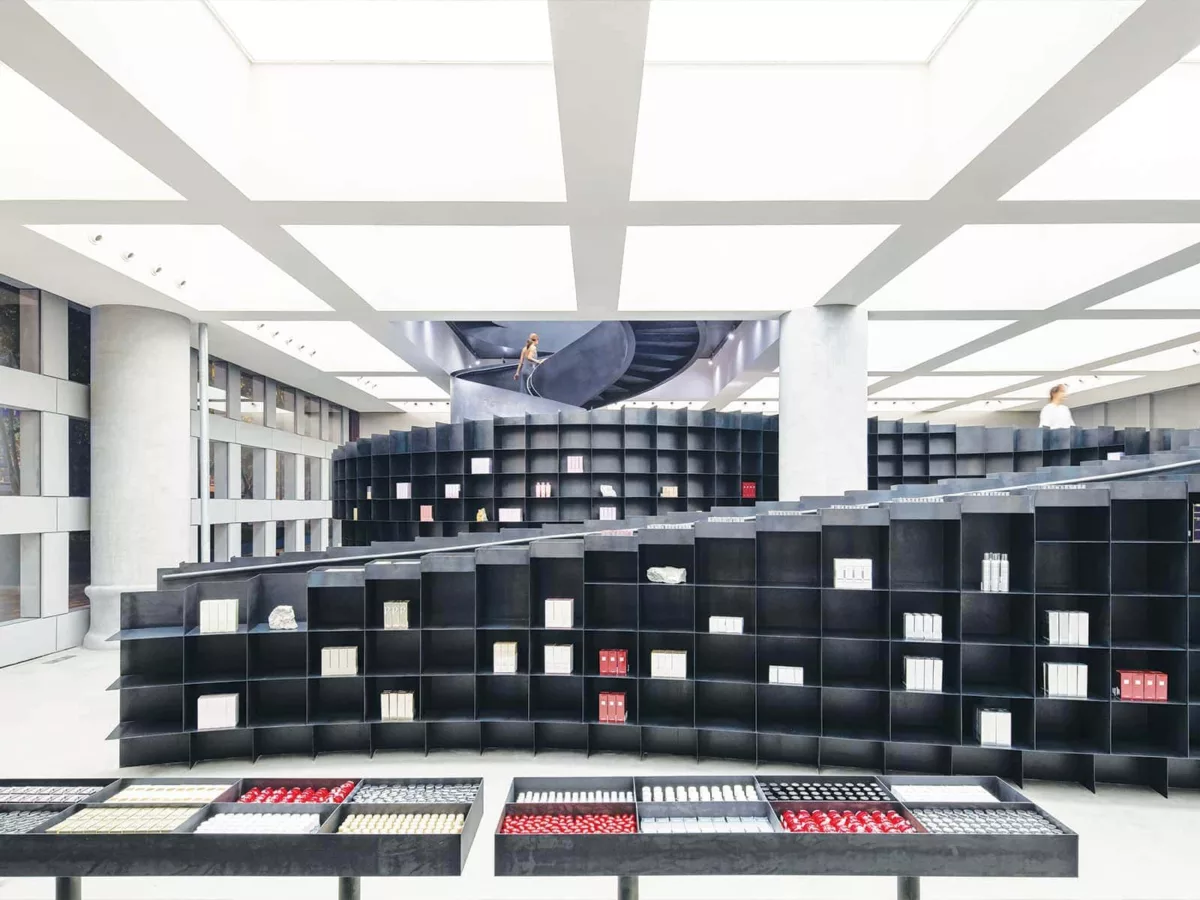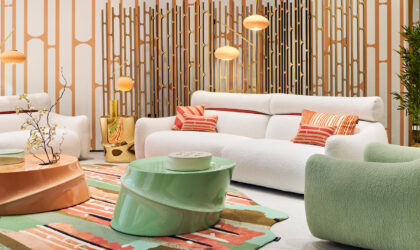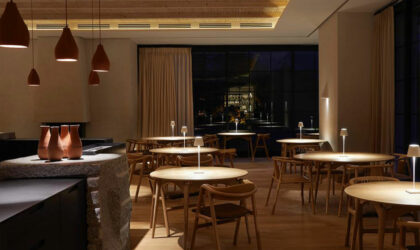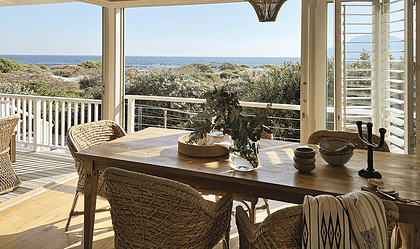It used to be – and not that long ago – that store design was considered and configured predominantly on feedback provided by research into consumer psychology. With as many as ninety percent of the population of Western countries being right-handed, for example, the layouts of many retail environments favoured merchandising on the right, as these consumers tended to enter a space and naturally gravitate in that direction. Consumer insights like this, and other data gleaned from extensive research into how we shop, dictated design. And while this was, and in many ways is still relevant, for department stores or retail environments with significant floorspace, it impacted the thinking behind single-brand stores too, like those of boutique beauty brands.
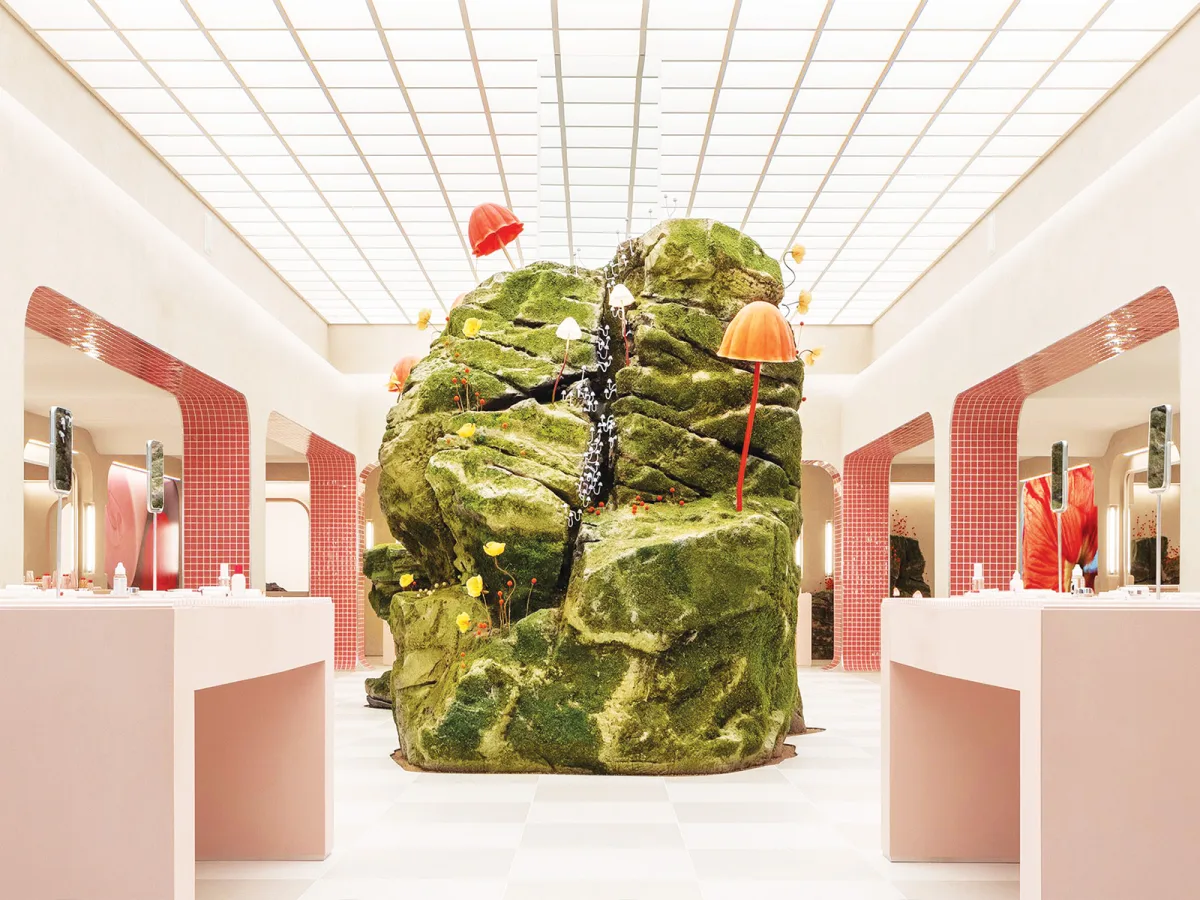
Such thinking was also a factor in the globalised aesthetics of stores. In South Africa, one Edgars Red Square looked pretty much identical to another, and internationally a cosmetics retailer like Sephora’s stores appear consistently the same regardless of country or continent. In addition to the manufacturing advantages standardised aesthetics offer corporations, the understanding was that they also left the consumer recognising the familiar and feeling comfortable. To what extent though do uniform aesthetics and consumer psychology insights still hold true today, in a post-pandemic world in which our appreciation of the local, the regional and the cultural has only increased?
A growing number of interior architects and designers would argue not. So too does cult publishing brand Wallpaper* – ever the bastion of high design – that, in a recent article, described contemporary beauty stores as ‘flipping the design script’. Unquestionably, there is a design revolution (better yet, reinvention) underway. One that, in an Instagram era that has shoppers more visually adept, addresses a design-savvy consumer. “Retail design has become more focused on an immersive experience that encourages the visitor to document and share,” says Susan Scott, founding architect of Vancouver-based Scott & Scott Architects, and lead creative behind the interiors of Formula Fig, a Canadian beauty brand with Fig Bars that offer instore treatments alongside skincare products.
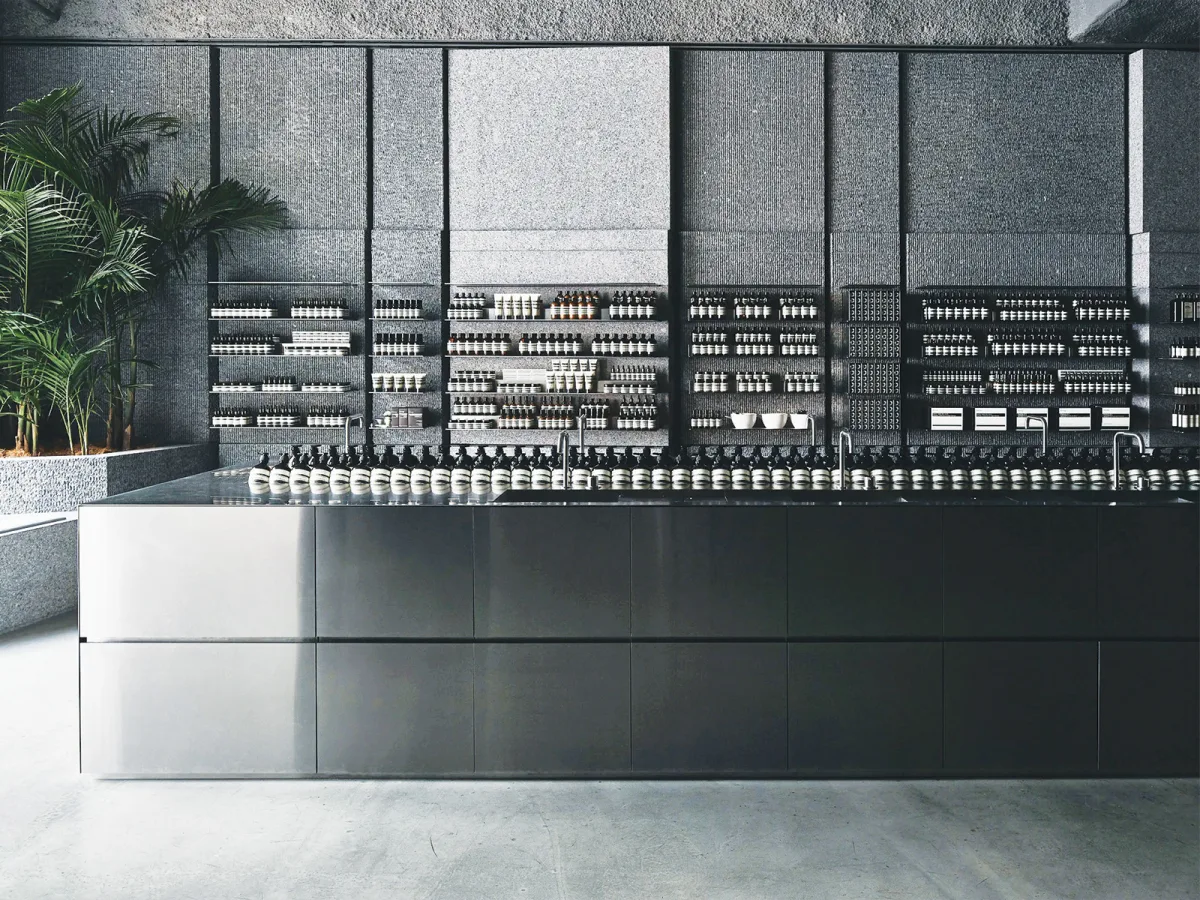
The importance of the relationship between retail experience and social media on future commerce is equally of value to international brand Tom Ford. With the opening of the designer’s first stand-alone beauty store late in 2022 in Covent Garden, a new benchmark was set for tech-lead beauty retail. The store offers augmented-reality cosmetics trialling and mirrors that record one’s make-up tutorials (later emailing them to you, ready for social media upload). It’s safe to imagine that further stores like this will open globally. And, given corporate thinking, equally safe to assume that these interiors and experiences will be largely standardised, designed to look and feel the same regardless of location. They’re forward thinking in terms of technology, less so in terms of interior design.
Founder of Australian skincare brand Aesop, Dennis Paphitis, in conversation in 2012 with Marcus Fairs, the then editor-in-chief of Dezeen, explained that it was through necessity that the brand (in its infancy, with a small team working to open a handful of stores simultaneously) took the decision to work with different interior architects on different retail spaces. “That just got me thinking about the kind of assault on the streetscape that retailers inflict through the ordinary course of mindless business, the idea that one size would so often be forced to fit all,” he said. “I was horrified at the thought of Aesop evolving into a soulless chain. It wasn’t so hard to respectfully consider each space individually, consider the customer, the context and to bring a little joy into the conversation.” Ahead, in thinking, of the then beauty pack, Paphitis’s comment points to his understanding that, while universal similarities may unite us in how we shop (for example, evidence suggests we spend more time in stores with mirrors), our geographies – and in turn cultures – offer equally different ways in which a brand can entice, and form a relationship with, a consumer.
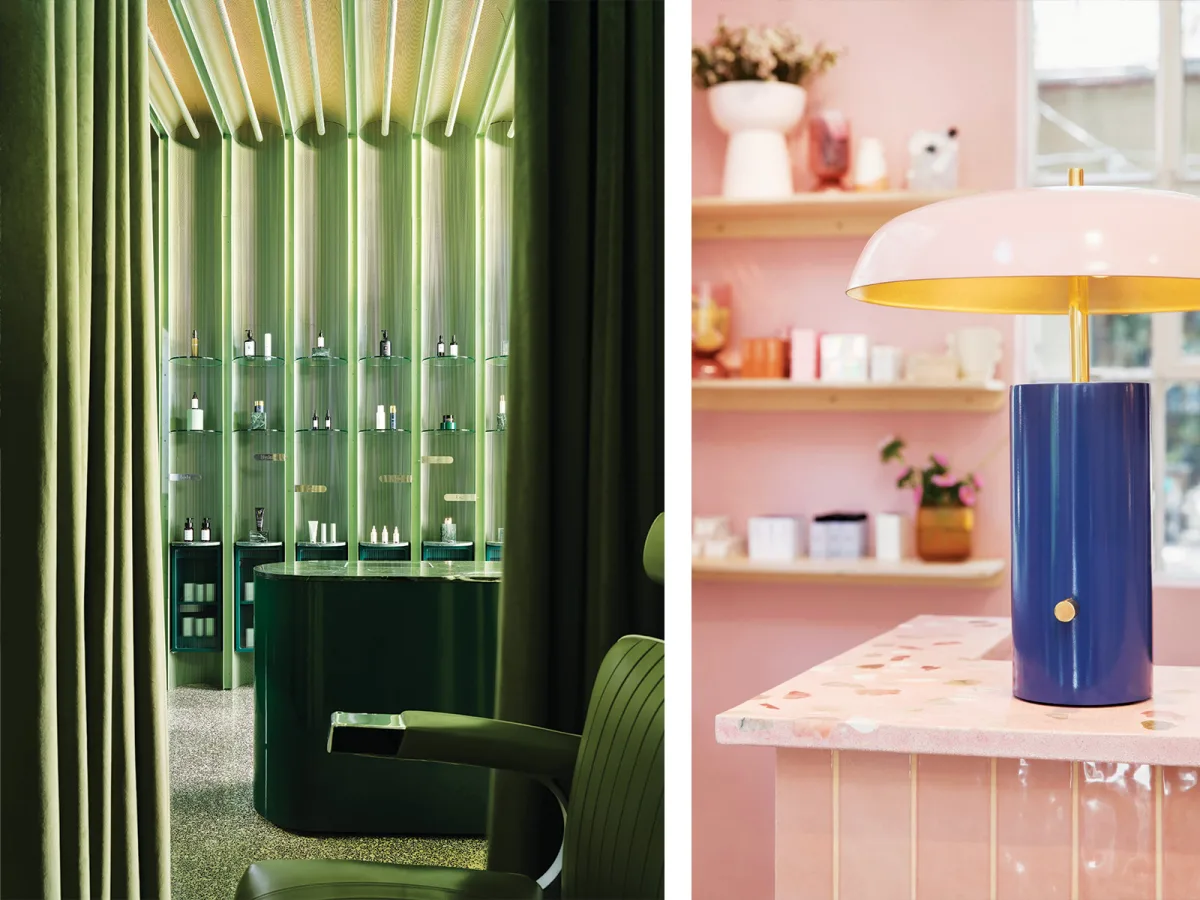
“We didn’t ever want a standard Aesop shade of orange or green that was plastered onto stores with a nasty logo over it,” Paphitis continued, “but instead to look at the streetscape and try to retain and redeem existing facades that are there, and work with a local and relevant vocabulary to contextualise what we do.” Design that considers its immediate environment, and graciously defers to it, has been at the forefront of Aesop’s visual language ever since. The brand’s store in Rome, for example, was designed by film director and designer Luca Guadagnino, who referenced a bygone Rome when the city and surrounding countryside were more connected. Both his colour palette and material choices were inspired by the city’s aged buildings, while hay bricks on the ceiling allude to Rome’s proximity to a rural landscape. The result is a look that’s not replicated elsewhere, but specific to this store.
Paphitis’s embrace of aesthetic deglobalisation has given rise to a new generation of beauty brands that have followed suit. Chinese cosmetics retailer Harmay has, since the opening of its first store in 2017, worked with AIM Architecture on the design of all its stores. The architects have further interrogated concepts around deglobalisation, applying these to Harmay’s twelve stores across China, a country with vastly differing regions. Each store has its own look and offers consumers the opportunity to browse unassisted. Rather than shop assistants ushering shoppers through each space, interior design now tackles the task. In Chengdu, an architectural spiral ramp between floors doubles as shelving. In Chongqing, a conveyor belt houses product and dictates the floor plan. And in the brand’s newest store (opened last year in Shenzhen), steel piping at the store’s entrance morphs into display units, while simultaneously referencing the city’s dramatic urbanisation over the past half century.
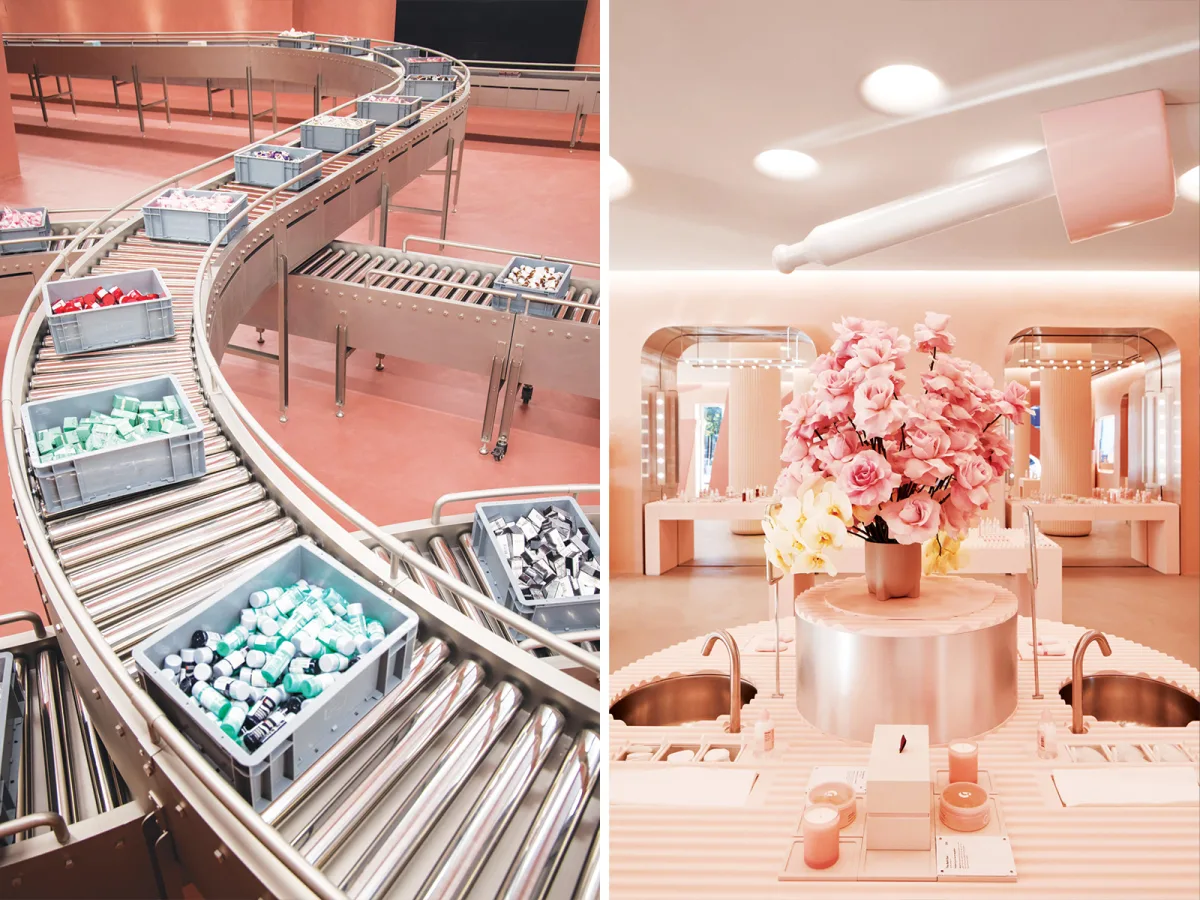
Today’s boutique beauty brands, and the architects they partner with, know that store design has become as alluring to consumers as their product offering. Renowned creative couple Victoire de Taillac and Ramdane Touhami understood this when relaunching French skincare brand Buly 1803, formerly the defunct Bully. Buly 1803 has 25 stores, from Paris to their newly opened Kobe store. “Each one is a manifesto against standardisation. Each is inspired by its home city: the architecture, the culture, the residents, and their customs,” the couple explains. Details borrowed from each location’s surroundings marry with the aesthetics of 19th century French pharmacies, and include furniture and panelling in polished walnut, antique faucetry, and bottles, flasks, and vials in various materials. The strength of such aesthetics extends to the brand’s exquisite packaging too.
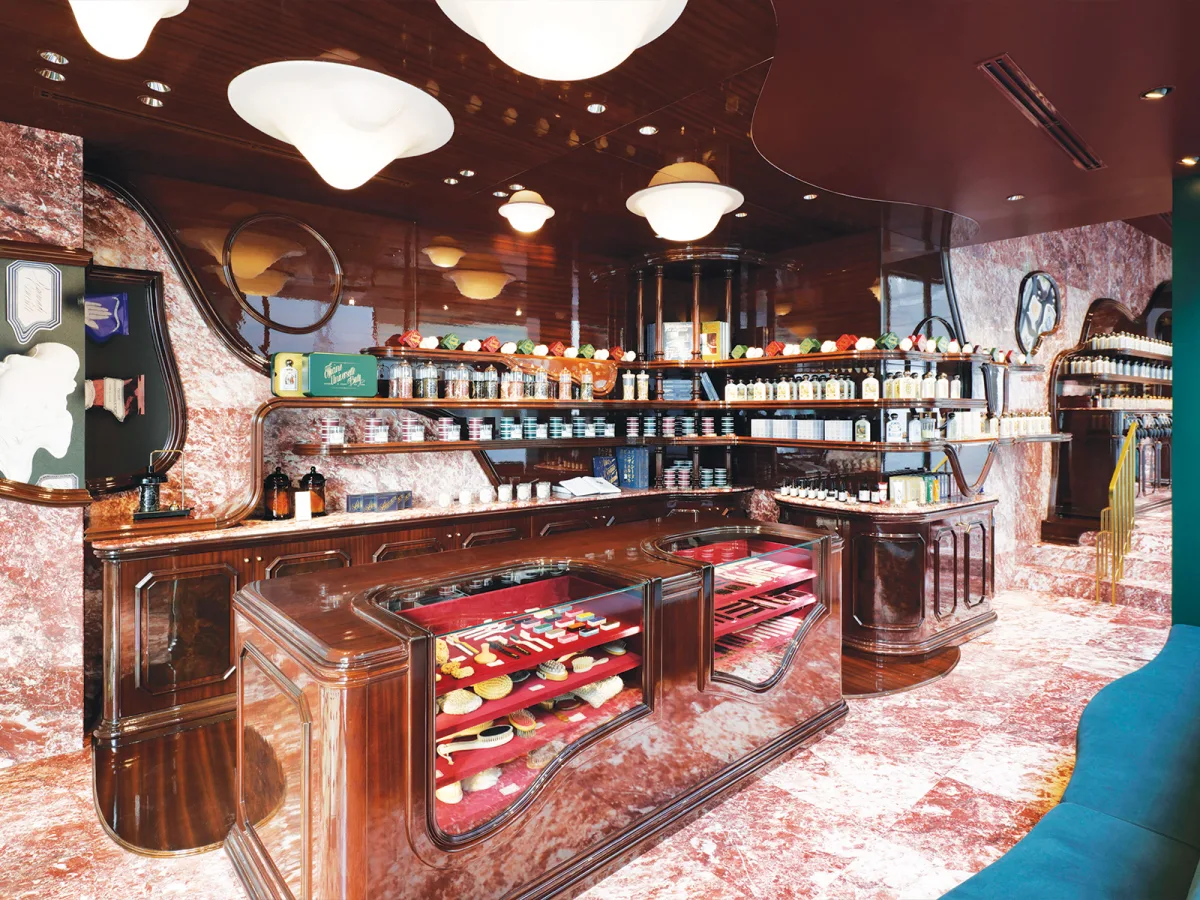
On home soil, local interior architects’ and designers’ thinking reflects this global shift. With a background in consumer science, Roxanne Ferreira, founder of Arrange Studio, conceived the interior of online retailer Glow Theory’s first physical store in Johannesburg. Her design addresses both the practical and the creative. “I asked myself what’s the most comfortable height for a consumer to reach and read,” she says, then explains that her choice of pale pink tiles and terrazzo mimics a home bathroom (leaving customers feeling comfortable) and simultaneously provides the staff with an interesting surface on which to photograph product for social media. “Any planning, be it of a small boutique or multi-level department store, should always put the customer experience at the forefront of design,” Ferreira says. In an era of rampant consumerism, it’s encouraging to know that the beautiful behind the beauty brands is more than skin deep.
by Martin Jacobs
